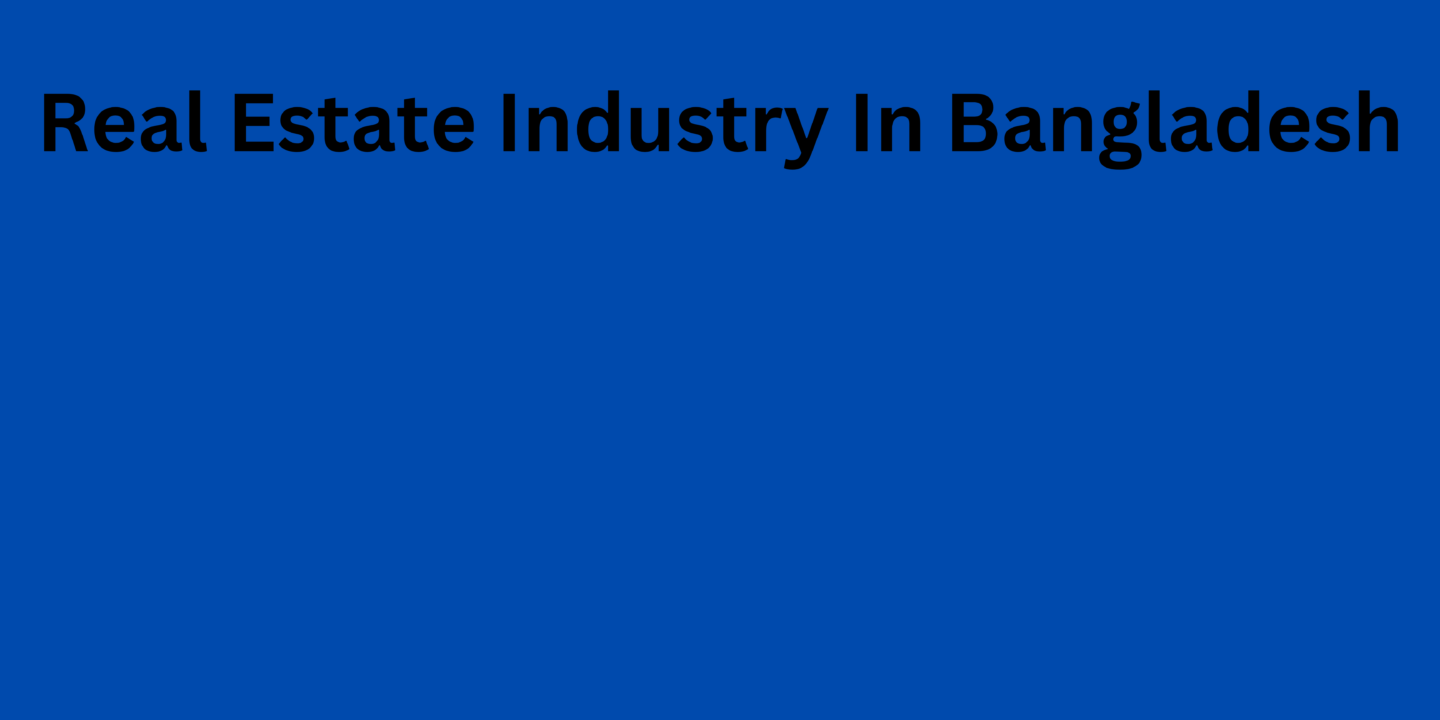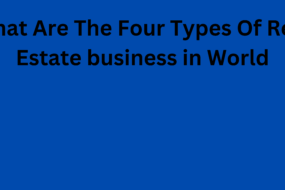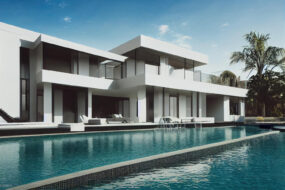
Bangladesh’s Real Estate Industry: Development, Trends, and the Future
Bangladesh has grown significantly since the 1970s, when the real estate industry first began to take off. It is currently one of the fastest-growing industries in the nation and has significant economic effects.
The initial period saw the business grow gradually thanks to Bangladesh’s rapidly expanding housing and infrastructure markets. The real estate market in our country has grown tremendously, largely due to rising demand for better homes, an expanding middle class, and soaring per capita income. Even while this sector’s growth was previously primarily powered by the rising supply of apartments, today’s developments such as condominiums, shopping centers, significant infrastructure, office buildings, hotels, hospitals, highways, bridges, etc. are significantly boosting the real estate sector’s growthin Bangladesh.
The Bangladeshi government has made significant efforts to encourage private investment opportunities to assist the expansion of this sector. According to experts, the real estate sector would expand over the next several years and play an important role in Bangladesh’s transition to a prosperous country.
Bangladesh’s Real Estate Industry’s History
After the independence war in 1971, Bangladesh began to gradually recover from the extreme turmoil it had experienced. It was finally time to grow its enterprises and industries. Although the real estate sector started to establish itself in the early 1970s, it really began to take off in the 1980s. At that time, urbanization was beginning to happen quickly. Finding extra space to accommodate more people became necessary because of how quickly the population was growing. Being a developing country, Bangladesh’s government was unable to provide housing for everyone due to rising urbanization. Housing our enormous population has been a problem for the real estate industry for the past 40 years, and it has not been simple.
Only five corporations were active in the real estate market in the 1970s, with the development of the housing sector mostly concentrated in Dhaka. However, as additional competitors entered the market in the next decade in response to the spike in demand for lands and homes to meet the expanding population, the situation swiftly altered.
Due to the growing need for infrastructure such as industrial buildings, corporate offices, housing units, highways, bridges, hospitals, shopping malls, and other types of infrastructure, Bangladesh saw a significant construction boom in the 1990s. until meet its needs, Bangladesh has continued this pattern until the present. Due to the enormous potential in this sector, more and more businesses began to enter it. For instance, about 42 developers were employed in Dhaka at the beginning of the 1990s. Early in 2013, the number increased to 800, and as of 2016, it is now at 1151.
Bangladesh’s economy displayed a strong association with the nation’s GDP in the first ten years of the twenty-first century, highlighting the influence of the real estate sector. It became abundantly evident that people in the nation were looking for ways to raise their standard of living as they were able to steadily increase their discretionary money. The need for dwellings with more comfort was growing as a result. International firms needed high-standard office premises with plenty of amenities due to the significant investment potential from outside as well. It was also a significant factor in the nation’s rising real estate trend. The following graph demonstrates a significant relationship between Bangladesh’s real estate industry growth in the 2000s and the country’s overall GDP growth.

REHAB
As the number of firms increased gradually, several problems pertaining to the housing industry surfaced and required prompt resolution. At this moment, a trade organization of real estate developers was necessary to protect the wide interests of the industry. To advance the position of the real estate sector, the Real Estate & Housing Association of Bangladesh (REHAB) was founded in 1991 with only 11 members. The primary objective of REHAB was to encourage formal private-sector real estate development in Bangladesh.
The association currently has close to 1200 members, including REHAB. The growth of the nation’s real estate sector has been significantly aided by REHAB. All the current members came together to draft an agreement, and it gave useful resources and insight into the various stages of growth the nation has gone through throughout time. REHAB members considerably enhance government revenue through registration fees, income taxes, and utility service fees.
The State of the Real Estate Market Currently
Currently, Bangladesh’s real estate market offers one of the most alluring investment opportunities. This can be largely related to the increasing rate of urbanization. Data from the World Bank show that Bangladesh is currently urbanizing at a rate of about 3% annually. Approximately 38% of the population of Bangladesh lives in urban areas nowadays. There is a severe scarcity of suitable housing in all major urban centers, and as the need for new homes increases, this shortage is expected to worsen.
In the nation’s largest cities, it is estimated that between 6 and 8 lakh units are currently needed. Due to the concentration of Bangladesh’s urban population in Dhaka and Chattogram, real estate development is heavily concentrated there. Estimates indicate that in addition to the 2 lakh replacement units and project delays, Dhaka alone requires 60.000 apartments. In recent years, Dhaka has had the fastest growth of any city in Bangladesh. Due to this, there is a high demand for land and apartment complexes. This business appeals to both foreign and local investors because of its size and vast unmet demand.
Currently in Dhaka, people are gravitating toward residential neighborhoods. They seek a location that is removed from the clamorous noises of metropolitan traffic. Despite the price increase, there is a discernible trend showing that individuals want to invest in flats close to the outdoors. In Dhaka, there are a number of upcoming commercial developments that are only waiting to be made public.
The real estate sector is expanding dramatically in Dhaka, among all other cities in Bangladesh. Dhaka can support more than 600,000 people annually at its current rate of growth. This suggests that the city will need more than 120,000 dwelling units to accommodate the growing population. Only about 25,000 housing units are currently available in the city, of which 15,000 have been donated by private contributors such real estate development firms. Nowadays, most families consist of parents and one or two kids, and they choose to reside in apartments with two or three rooms.
Most of the apartments are 1,000 to 1,600 square feet in size. Only 2% of residential apartments are smaller than 700 square feet, therefore the housing industry hasn’t been able to adequately address the issue. However, as the number of nuclear families is growing, more people are becoming interested in buying modest apartments. But most individuals want an apartment with at least three bedrooms.
The Effects of COVID-19 on the Real Estate Market and Their Consequences
When the government instituted a two-month nationwide lockdown between March 26 and May 30, 2020, there was little demand for apartments because individuals did not make such substantial purchases during the Covid-19 outbreak. As a result, all housing developments were halted. Since staff members, including construction workers, had to go home due to the lockdown, around 6,000 REHAB member projects had to be put on hold. The owners of housing businesses were particularly concerned about how they would pay their employees due to a shortage of finance and the fact that a number of clients were unable to make payments on time.
The real estate market experienced a recovery post the Covid-19 pandemic. This was primarily due to the utilization of untaxed income for purchasing properties such as homes, land, and apartments, thereby avoiding the need for inclusion in the current fiscal budget. Experts have revealed that banks and non-banking financial institutions are offering low-interest mortgage loans to lenders, providing a secured investment option with interest rates below 9%. Consequently, Dhaka’s real estate market witnessed an increase in accessibility for potential homebuyers. With the pandemic-induced lockdown causing a one-year delay in real estate projects, investors are now showing a heightened interest in ongoing developments. As lockdown restrictions began to ease and people returned to their normal lives, the availability of ongoing flats for sale has steadily increased each day. This has greatly contributed to boosting the country’s economy.
A new trend emerged in Bangladesh’s real estate market as the pandemic situation started to improve. People’s desire to purchase apartments in Dhaka significantly increased. As a result, the demand for flats in the city grew quickly as more and more people became keen to buy their own residences. Medium-sized flats were in particularly high demand, which also resulted in competitive prices within this range.
STUDIO APARTMENTS: New Market Trends
Following the Covid-19 pandemic, the real estate sector witnessed a shift in trends. A new group of customers emerged who were specifically interested in studio apartments. These apartments typically consist of a single, spacious room ranging from 250 sqft to 1000 sqft, encompassing a bedroom, dining area, a relatively compact kitchen, and bathroom facilities. Additionally, individuals have also expressed growing interest in luxury commercial properties, utilizing them for diverse business ventures.
BUILDINGS MADE OF STEEL
Steel structure buildings, as opposed to traditional buildings, are becoming incredibly popular in urban areas. It is incredibly easy to create and considerably safer. Furthermore, compared to other types of structures, steel structure buildings are considerably better able to endure natural disasters like earthquakes and severe winds.
COMPUTER PRESENCE
Many real estate development firms have adopted a fully digitalized service module so that clients may quickly review all of the services offered by a certain firm. These businesses display a comprehensive website where customers may view their portfolio, finished apartments in Dhaka or other regions of the nation, and apartments that are still being built. Many potential purchasers have benefited from the virtual presence in their ability to make well-informed investment selections.
Global Perspective and Bangladesh’s Real Estate Market
COMPUTER PRESENCE
Many real estate development firms have adopted a fully digitalized service module so that clients may quickly review all of the services offered by a certain firm. These businesses display a comprehensive website where customers may view their portfolio, finished apartments in Dhaka or other regions of the nation, and apartments that are still being built. Many potential purchasers have benefited from the virtual presence in their ability to make well-informed investment selections.
When it comes to investment options like bonds, stock markets, SMEs, or mutual funds, people in Bangladesh tend to feel much safer investing in real estate compared to their neighboring countries. Investing in real estate not only offers a secure future for oneself and their family, but it is also considered the most favorable choice in Bangladesh.
The Size of the Real Estate Market Currently
The value of Bangladesh’s real estate market as a whole is projected to be 58,000 Crore BDT, growing at a 15–17% yearly rate. The availability of 1200–1400 square foot apartments has increased by 39% over the last five years. The two largest cities in Bangladesh, Dhaka and Chittagong, both have thriving real estate markets. Compact housing is in great demand in Bangladesh’s thriving cities like Dhaka and Chittagong. In Bangladesh, the real estate market saw two different booms: the first from 2006 to 2009 and the second from 2015 to 2018. Between 2022 and 2025, there may be another increase.
A fresh population boom will be fueled by changes in popular culture and generational trends, a shortage of land, and a revolution in inexpensive housing. Bangladesh has seen a significant increase in the number of authorized residential zones around the country during the past ten years. The number of apartments in demand rose to an astounding 120,000 each year. In addition, real estate firms now build about 42% of the dwellings in Dhaka.
The prices of apartments and land have experienced a significant increase over the past few decades. Particularly, the average land price has been consistently rising since 1975.

The increasing prices of land and other construction materials have played a significant role in this pattern. The government has yet to impose regulations on the surging land prices in Dhaka city. The prices of apartments directly correlate with the cost of land. Additionally, the expenses associated with building materials such as bricks, granular sand, cement, rods, and more, experienced a notable surge after 2005. As a result of these dual factors, the rental housing costs have escalated.
Contribution of the Real Estate Industry to the Economy
The building and selling of dwellings is one of the major drivers in the expansion and industrialization of a nation’s economy. The Bangladeshi real estate market is evolving into a significant sector of our economy. Due to the considerable multiplier effect it has on other economic activities, it plays a key role in economic growth. This sector of the economy is a significant source of employment after agriculture.
The building and selling of dwellings is one of the major drivers in the expansion and industrialization of a nation’s economy. The Bangladeshi real estate market is evolving into a significant sector of our economy. Due to the considerable multiplier effect it has on other economic activities, it plays a key role in economic growth. This sector of the economy is a significant source of employment after agriculture.
The Future of Bangladeshi Real Estate
Despite the economic recession and global downturn, the real estate market in Bangladesh demonstrates remarkable potential for the future. This industry is experiencing an increase in investments, while the government is actively promoting its significance to attract substantial investments from both domestic and international sources. The upcoming section will explore several significant trends expected to shape the future of this industry.
Investments have been on the rise.
The government’s decision to allow tax-free income to be invested in real estate was a significant step towards increasing real estate investment. As a result, approximately Tk 3,200 crores have been invested in the property market without incurring any tax liability. Many experts in the field predict that more money will be invested in such properties. Increased investment in the industry will also be facilitated by other crucial legislation, such as reducing house loan interest rates to 9% and lowering land transfer taxes from 2% to 1% and stamp duty costs from 3% to 1.50%. Therefore, the next five years appear to be very promising for this industry.
The demand has increased.
Bangladesh is a very small nation, and people choose to reside in urban regions, particularly in the capital city of Dhaka. As a result, these areas have quite high population densities. The availability of high-end amenities has increased demand for apartments in Dhaka. Despite the pandemic’s negative effects, interest in the property dramatically increased in 2020. According to research, the land was more in demand at the end of the year than at any other time. Having said that, a plausible explanation exists.
Real estate offers lower returns than investing in structures, so purchasing land is a far better choice. Land is less expensive outside of Dhaka than inside the city, in places like Purbachal. The price of land there is likewise rising quickly. As a result, there has been an increase in interest in buying real estate in Purbachal and the nearby areas. Through 2023 and beyond, the Bangladeshi real estate market is anticipated to continue growing. More people will be able to afford to buy homes as the economy bounces back from the effects of the pandemic, especially in Purbachal.
Conclusion
The health of the economy in our nation depends on the real estate sector. This sector directly contributes to GDP through developing residential and commercial infrastructure, redeveloping unused and underutilized property, assisting other firms in growing, luring local and foreign investment, and generating jobs. The real estate market has been constantly growing ever since it began. It’s logical to suppose that the real estate sector in the nation is expanding and diversifying in step with the nation’s general socioeconomic development.
Millions of Bangladeshis now have a place to call home or a job they love, making Bangladesh’s real estate industry’s expansion a gauge of the nation’s success and a source of hope. If the current rate of market increase is sustained, this business and our nation have a bright future. Finally, the overall state of Bangladesh’s real estate market offers hope for a better future for all those working in it as well as for the general public trying to locate an affordable and acceptable place to live.



